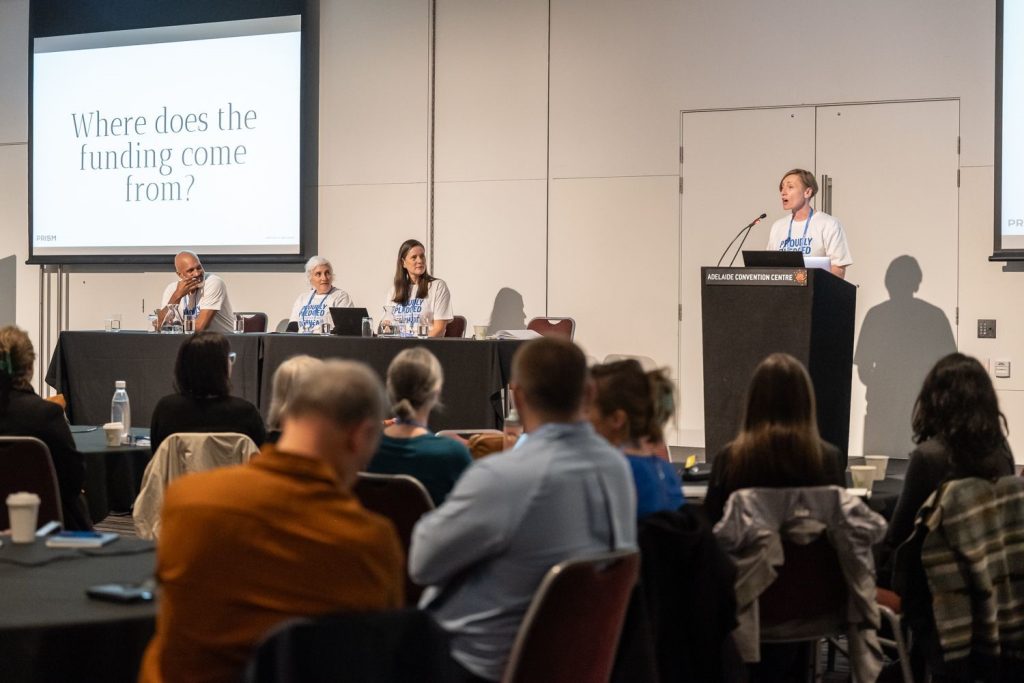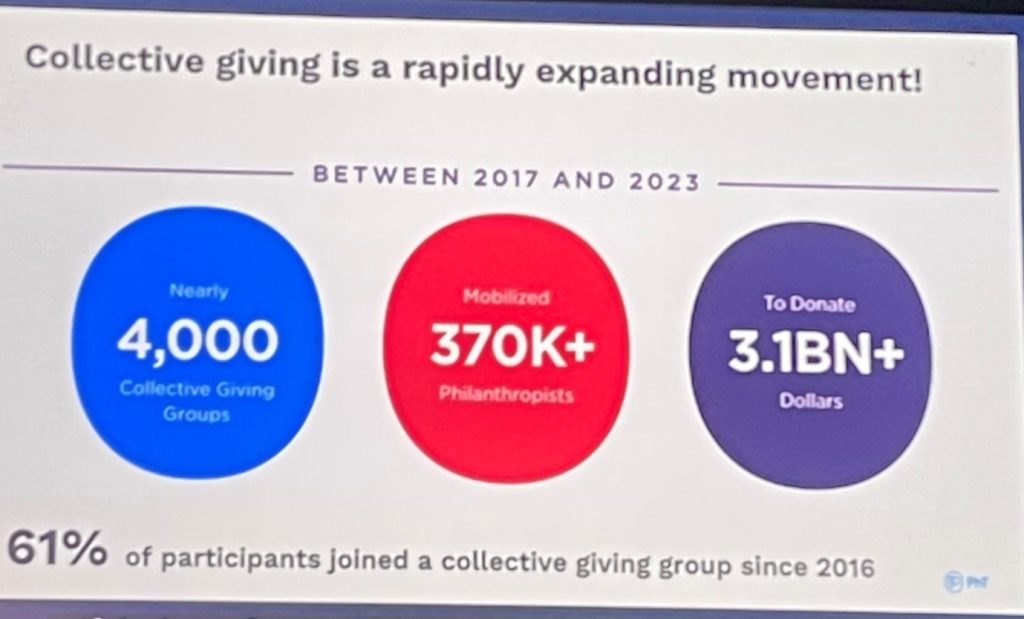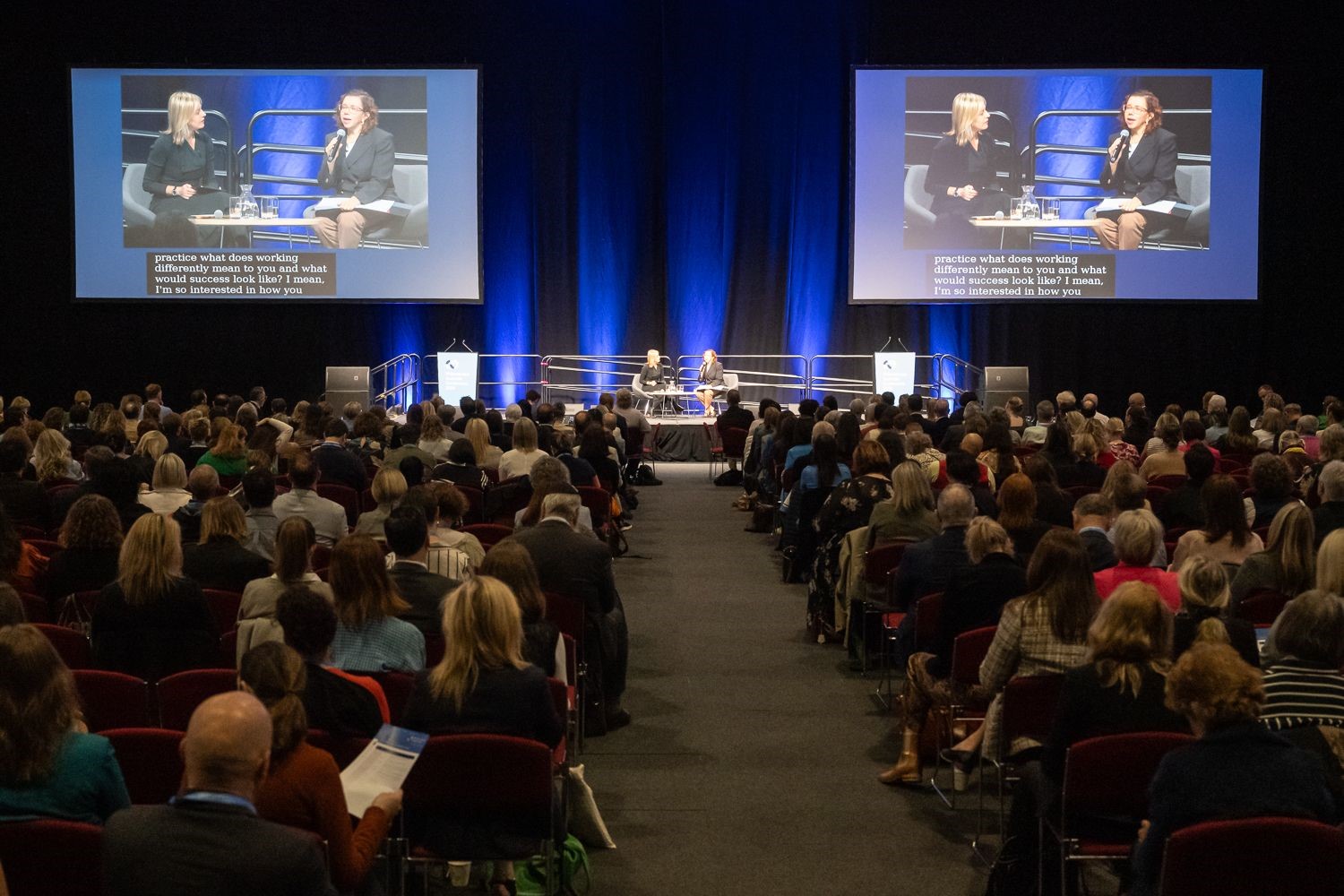What happens when you get 1100+ people together at the 2024 Philanthropy Australia (PA) conference, who are passionate about finding solutions to the biggest issues our world faces?
Feelings of overwhelming hope, inspiration and motivation to do better and do more, together!
While the conference may be over, the ongoing conversations and general buzz is real. The online discussions have been tremendous (be sure to give PA a follow on LinkedIn and search the conference hashtag #PAConference2024 to get caught up), so rather than rehash a lot of already brilliant insights, learnings and messages, Team SG’s Geoff and I thought to share our key takeaways and learnings for all the amazing for-purpose organisations and enabling partners (funders) that we have the privilege of working with and alongside.
1. Trust-based philanthropy. What is it?
On the ground relational problem solving, open honest, TWO-WAY conversation involving deep listening and community consultation, and unrestricted (untied) funding. To exemplify this in active practice, we were privileged to hear from some of the team at the Segal Family Foundation, including Board Members (who are previous / current grant-holders) from Rwanda, Nairobi and Uganda.
Andy Bryant, leads the Foundation which, after the Gates Foundation, is the 2nd biggest U.S. funder in Africa! Andy’s key tips for funders wanting to embody trust-based philanthropy are:
- Unrestricted multi-year funding
- Do your homework on the places and causes you want to fund
- Simplify and streamline the paperwork for beneficiaries
- Be transparent and responsive
- Solicit and act on feedback
- Offer support beyond the dollars
There also needs to be acceptance of what is not working and acknowledgment that we are not always going to get it right the first (or even more times). This was exemplified by Keynote Speaker James Chen, in his inspiring presentation on Moonshot Philanthropy. 21 years, to achieve vision—literally!
“The risk of any moonshot endeavour? Failure. Without the tangible possibility of failure, and without embracing the risk of testing unconventional out of the box ideas, we would never be able to shift the paradigm on the complex issues we each seek out to resolve.” – James Chen
Another amazing international plenary followed, from Safeena Husain, Founder and Board Member of Educate Girls who took us on the journey of the big change that can happen, with big, long-term investment. For big change to happen, the partnerships need to be transparent, trusting, and long-term, with untied funding. And in Educate Girls’ case it takes 6-8 years to create the mind shift and sustainable impact, in the villages of India where their work is focussed.
Flexible long term philanthropic capital is required, to create sustainable impact. This is how to solve problems rather than support projects. And the impact? Ten million learners in ten years!
Prioritising place-based work and community consultation were reinforced in the final day’s opening plenary with The Hon Amanda Rishworth, Minister for Social Services. Minister Rishworth noted that the history and knowledge of what’s worked and what hasn’t, is held in communities. People in communities know what they need. We therefore must share the vision and decision making with communities and find local, authentic, competent voices.
2. Pay What it Takes and Reframe Overheads
I sat in the on the first Masterclass at the Philanthropy Australia Conference a few years ago, when Pay What it Takes was first launched. It is great to note that significant progress is being made with this dialogue, now being presented in partnership with Reframe Overheads.
This conversation is also at the heart of Trust-Based Philanthropy.
The Pay What It Takes Self assessment tools are for use by both service delivery organisations and funders. The advice is, if you are facing push back from funders and boards about the true costs of delivering your programs and services, these tools developed by TACSI, will help to frame the conversation that must be happening across the for-purpose sector.

Pay What it Takes Masterclass. Image credit: Philanthropy Australia.
It also needs to be acknowledged by fund-seekers, that as the dial does shift, and for-purpose organisations are providing true mission delivery costs and funders are paying them, the amounts funders need to give will increase.
This of course means, they may provide more to fewer. And for many funders, this presents another challenge of guilt at not being able to support as many organisations—an important perspective for fund-seekers to keep in mind. We must remove the blame and the shame.
And we must continue to work to change the mindset that charities who “run on the smell of an oily rag” is not sustainable and will only create burnout.
In one of my side conversations with a funder, we acknowledged and agree that for-purpose organisations are not typically asking for enough in core costs to create scale.
Social Enterprise funders particularly note that a lot of their work is in helping to create the business plan and budget for Social Enterprises, to create the foundations for a sustainable business model. They provide tools and training in how to invest to grow. Once again to the fund-seekers—align you projects to the RIGHT funders, who are best positioned to help your specific type of work, and leverage the additional support they can provide, beyond the funding.
Be clear on what it costs to operate and create the impact that you exist to achieve.
So, what about the smaller grants for smaller place-based services and projects?
3. Collective Giving
The gap between the wealthy and those in need has never been greater, with Philanthropy sitting in the middle. Referenced many times across the three days, a key theme emerging is that the face of philanthropy should not exclusively be the high-net-worth individuals and larger philanthropic entities, but all those with a love of humanity, giving gifts of “time, talent and treasure” to help make life better for other people.
Giving needs to be attainable by all. Why? Because the research presented by Sara Lomelin, CEO of Philanthropy Together, shows many benefits to members of collective giving circles, including a sense of belonging, confidence to take action, ability to live your values and with purpose, giving voice, and learning about diversity, equity and inclusion. The global growth of the collective giving movement is responding to the key issues of our time. And rightly so, the impact of smaller grants, related to specific projects and smaller community-based initiatives filling a need, will always have a place.

From Sara Lomelin’s presentation.
4. Smaller program grants
Liz Gillies from Menzies Foundation and Professor Ingrid Burkett from the Griffith Centre for Systems Innovation shared some great work they are doing with smaller groups (and budgets), bringing them together to align common goals, and enabling those groups to provide their own unique insights into common problems to work towards greater, or more holistic, solutions to problems.
This collective problem-solving to create action and change, with more sector sharing to learn from each other, enables replication of what has been proven to be effective, rather than attempting what is not.
Emphasis was put on funders providing not just funds, but “interstitium” or organic scaffolding to better enable this collaboration between organisations all working towards the same lofty goal. The idea being, it allows them to tackle smaller challenges with true collaboration—and to drive group-led creative solutions to complex problems.
And of course, community organisations should always consider the unmet need they exist to serve and how they can work with and not against, those who exist to meet the same goals.
5. Outcomes and measurement
The discussion continues (a little disappointed it still has to be part of the dialogue and not understood consistently as good practice), that small project grants should not expect arduous evaluation reports. Naturally there is always (and rightly so), an expectation that the funding recipient will be clear about what the funder’s money is used for and the benefits that are achieved for the beneficiaries through the grant, but it needs to be simple for small grants.
This should be a reflection point for consideration by those funders delivering small grants to community organisations.
The discussion led by Menzies Foundation and the Griffith Centre for Systems Innovation also showcased the rapid sharing of data across smaller fund-seeking organisations to help them better understand an entire problem holistically, in a timely manner. Collaboration enables sharing of infrastructure and resources, like data capture, analysis, reporting and shared learning.
It was great to hear too from international guest presenter, Mark Cabaj from Here 2 There Consulting who showed an interesting video that talked about some of the challenges of measuring impact, and how the many ways or types of measurement can introduce unintended side effects in the outcome.
Some examples:
- Goal oriented evaluations can put focus on specific outcome measurement, so can miss non-measured positive OR negative effects.
- Goal free evaluations can fail to understand the changes which have been made – instead, focusing on outcomes.
- System change measurement, usually manifesting through dashboards and KPIs can elicit tunnel vision in the program, which skews how the outcomes are derived.
Key takeaways here: Ask your funding partners for help in determining what they want to know and why? If needed, seek their advice and support in developing the appropriate and relevant data capture and evaluation frameworks.
6. Reconciliation in Practice
For me, one of the most moving and thought-provoking presentations was Truthtelling, by The Wyatt Trust CEO, Stacey Thomas, which exemplified her leadership in the sector.
The presentation and work by the team at Wyatt is courageous in exploring, accepting and telling the uncomfortable truth. This truth-telling will hopefully pave the way for more such honest, uncomfortable conversations to occur and build acknowledgement of what needs to be done to truly achieve reconciliation with our First Nations People. Congratulations to the team on being true leaders in reconciliation.
This address correlated strongly with Andy Bryant’s (Segal Family Foundation) statement that there is a “fine line between colonialism and philanthropy.”
A good note to end on, as it highlights the need for all the conversations to continue. So many thought-provoking and possible uncomfortable conversations were commenced, let’s keep them going!
Thank you, Philanthropy Australia, for delivering such a rich connecting, learning and sharing event, not only filled with amazing content from a diverse range of presenters and topics, but for providing the platform for funders and fund-seekers to have that all important open, respectful, two-way dialogue throughout the conference.
And in the words of the final event panel featuring past and present leaders of Philanthropy Australia, Philanthropy is after all, a team sport.

Team SG’s Geoff and Jo at the Philanthropy Australia conference.
Jo Garner is the Director of Strategic Grants and Geoff McRoberts is Business & Systems Analyst for Strategic Grants. Find out more about Team SG here!
